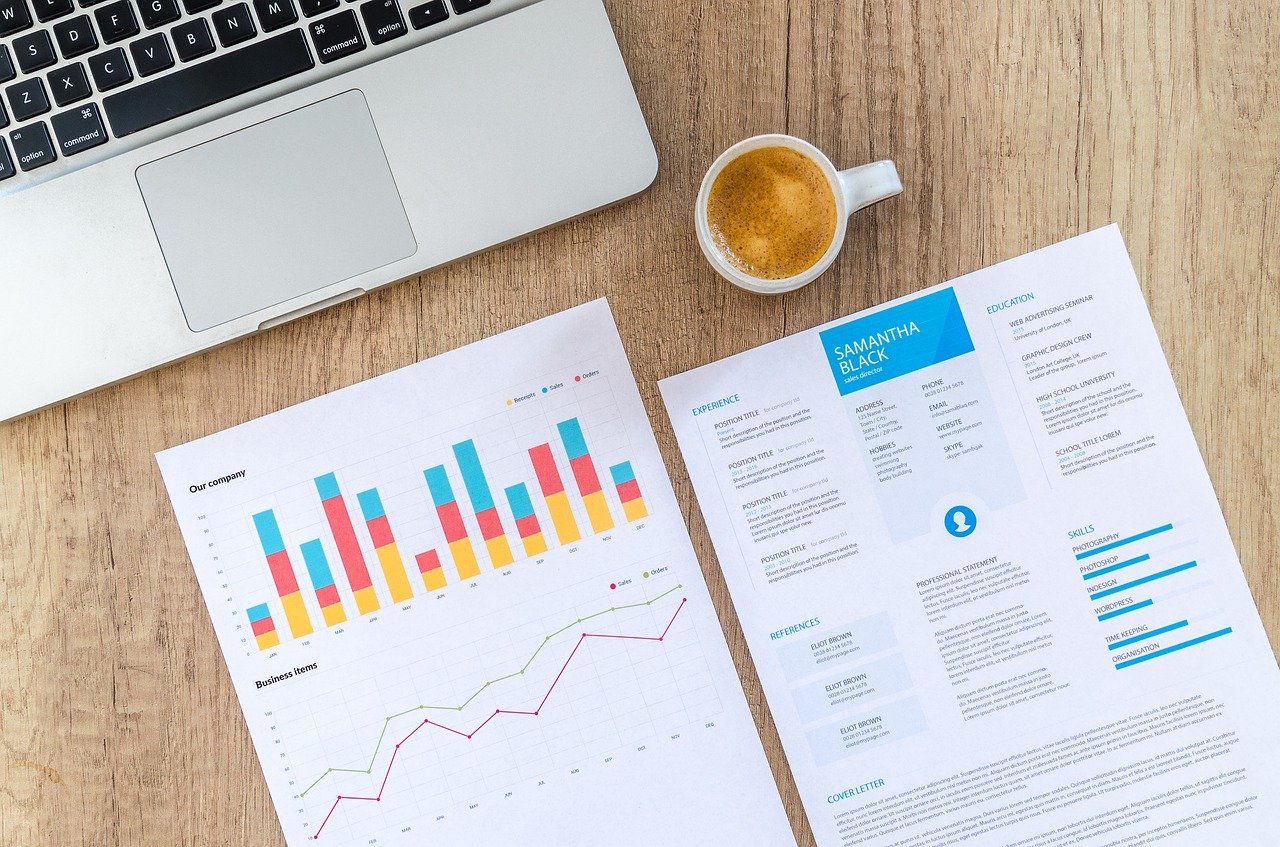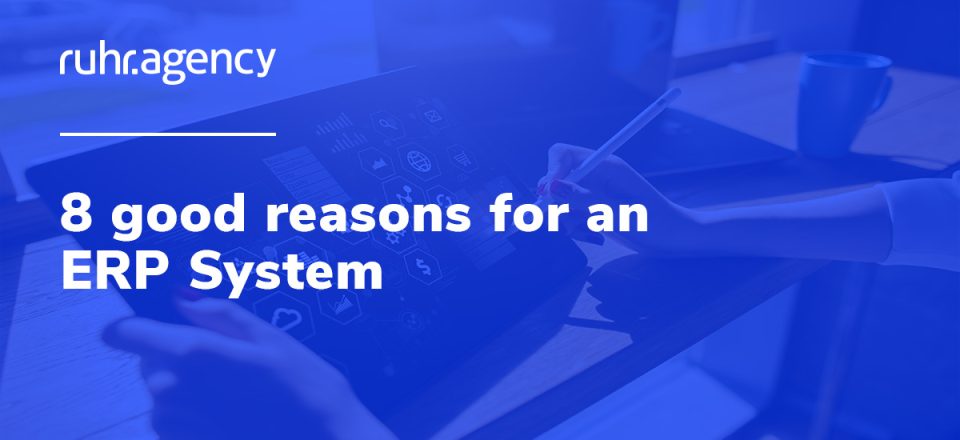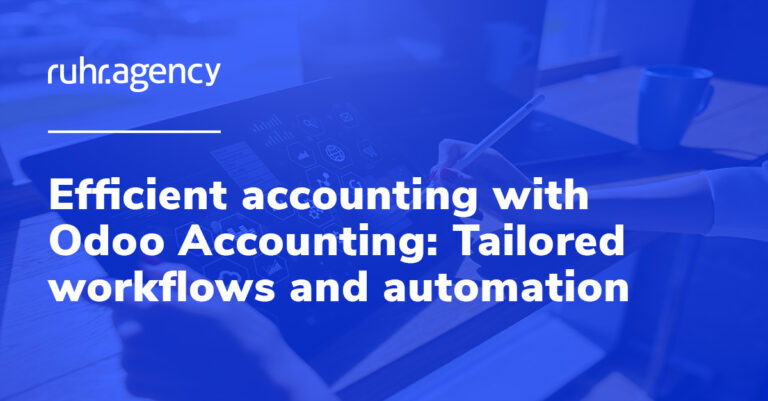Over the past 30 years, the world has changed from an analog to a digital world. What used to be done by phone or fax is now mastered by email or app. The technologies we will use in the future are still yet to be seen. But one thing is clear: The digital revolution is in full swing and we are only at the beginning of a thoroughly digitized world. This affects not only our private lives, but also business.
Many companies have realized the spirit of the times and are currently digitizing their business processes, some have already done so in the past, and start-up companies have been relying on digital processes from the very beginning. Digitalization actually affects all areas of a company: Accounting, sales, logistics, purchasing, service – business processes in all departments are mapped digitally nowadays. Often, each department works with its own software for this purpose, which sometimes causes a lot of friction in the business process.
This is exactly where an ERP system comes into play. ERP means Enterprise Resource Planning and, strictly speaking, concerns all corporate resources: tangible as well as intangible assets, cash flow, debts, people, information, data, documents, customers, time. A company-wide resource planning system would actually have to map all components and processes that have to deal with a company.
Was ist ein ERP-System?
In business operations reality, Enterprise Resource Planning usually refers to the core areas of a company such as purchasing, accounting, human resources, logistics, services, finance and production. Today, ERP often still resembles a patchwork quilt, since, for example, purchasing also involves the areas of ordering, stock management, production, logistics, implementation, accounting, maintenance and service, complaints processing and document flow. In this case, a continuous mapping of all processes can be achieved by integrating different modules. Today, the following applications are summarized under the term ERP:
- Financial accounting
- Asset accounting
- Payroll accounting
- Accounting
- Purchasing
- Project management
- eCommerce
- Stock control and merchandise management
- Production planning and control
- Warehouse management and logistics
- document management

Even large ERP systems do not cover all areas of a company and should therefore be supplemented by appropriate systems. These include, for example, a CRM (customer relationship management), a document management system (DMS) or a production planning and control system (PPS).
In the context of digitization, companies must rely on a uniform ERP system in order to be able to map all their processes. But what other advantages does a standardized ERP system offer?
1. Prozessoptimierung
When the webshop indicates whether items are still in stock. When the ordering system is linked to the logistics department and other fulfillment providers, and when purchasing knows at what time specific items are more in demand and inventory needs to be increased, then processes run smoother and faster. With an ERP system, it is possible to map all of these and other best practices in companies. This process optimization typically results in employees having more time for other tasks and a significant reduction in errors due to the elimination of manually maintained Excel lists or individual, proprietary solutions.
2. Einheitliche Daten und bessere Informationen
Keeping stock or order lists in Excel or other file formats and using individual software solutions for accounting or merchandise management, not only means a high susceptibility to errors and a significantly higher effort, at the end of the day there is also a lack of a common data basis. With the help of an ERP system, sales, logistics, accounting and purchasing can access common and uniform data and extract the information that is important to each of them.
3. Kollaboration
This common, consistent data basis is what makes cross-departmental collaboration possible in the first place. By integrating other systems such as document management, project management or CRM, all departments can use one system with the same data and collaborate even over great distances. This results in better internal coordination and communication. Better collaboration in turn leads to higher motivation among employees and increased customer satisfaction, as questions and problems can be resolved more quickly.
4. Reporting
The consistent data basis enables even more: analysis and evaluation. KPIs can be analyzed and evaluated company-wide. An ERP system enables both standard reports and individual evaluations. Based on these reports, the management board can derive recommendations for action, implement further process optimizations and drive corporate growth.
5. Datenqualität
The uniform data basis increases the quality of the data to a high level. Data that was previously compiled manually in Excel lists or duplicated in different systems is standardized and automated with an ERP. Sources of error and data loss due to transmission errors are eliminated and the consistency of the data is ensured. A valid database in turn contributes to process optimization, cost reduction and better reporting.
6. Kosten und Zeit
A standardized ERP reduces business costs, but not only by standardizing data. Optimized processes from purchasing to dunning, the time saved by employees through automation and also a higher level of acceptance and motivation of employees ultimately reduce costs in the company. As a rule, the use of an ERP system also consolidates the IT infrastructure in a company. This not only makes IT costs more transparent, in most cases an ERP even opens up opportunities for savings. ERP systems handle processes rationally. As a result, the manual effort of entering data and the corresponding repetitive work is eliminated. Thanks to process-oriented workflows, automated and manual tasks mesh seamlessly. This reduces unit labor costs and turnaround times. Working with an ERP system leads to greater efficiency and productivity.
7. Mitarbeitermotivation
The advantage of IT systems: Boring, repetitive tasks are taken over by IT systems, which is also applying for an ERP system. This increases the motivation of the employees, since the error rate is reduced and processes are simplified. They can concentrate on other, more important tasks and the overall workload is reduced. Satisfied employees, in turn, are more productive and motivated.
8. Kundenzufriedenheit
An ERP ensures transparent ordering, faster processing of orders and much more. However, the decisive factor for high customer satisfaction is still direct contact with the customer. The increased employee motivation described above also leads to greater satisfaction on the customer side in direct customer contact: satisfied employees ensure satisfied customers.
Conclusion
There is no way around digitization. In this change process, companies are faced with the choice of whether they want to digitally map their processes with various software solutions or whether an ERP system should be used. The advantages of an ERP solution are evident, as described above. Nevertheless, many companies shy away from the changeover, as such a project is time-consuming and cost-intensive. In addition to the large ERP systems, however, there are so-called Lean ERP, i.e. lean ERP systems that can be implemented much faster and can be connected to many other systems through interfaces. The decisive factor in an ERP project is the know-how of the implementation partner. They should not only be familiar with software and programming, but also with business processes. This is the only way to define process optimizations in advance of a project of this kind and to implement them afterwards. Just as crucial is the onboarding of employees. Again, the partner should be well positioned – the use of an ERP stands and falls with the acceptance of the employees.




